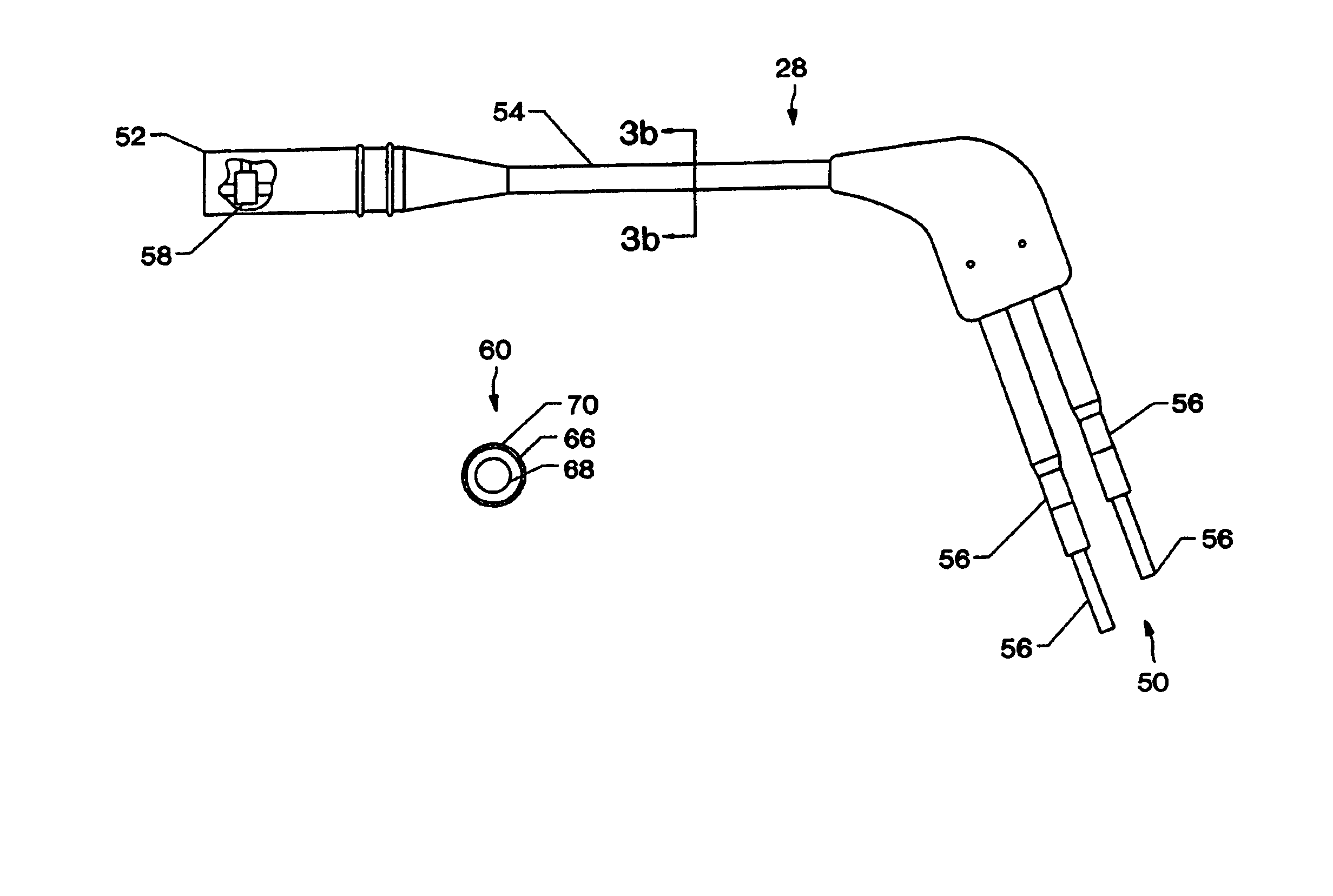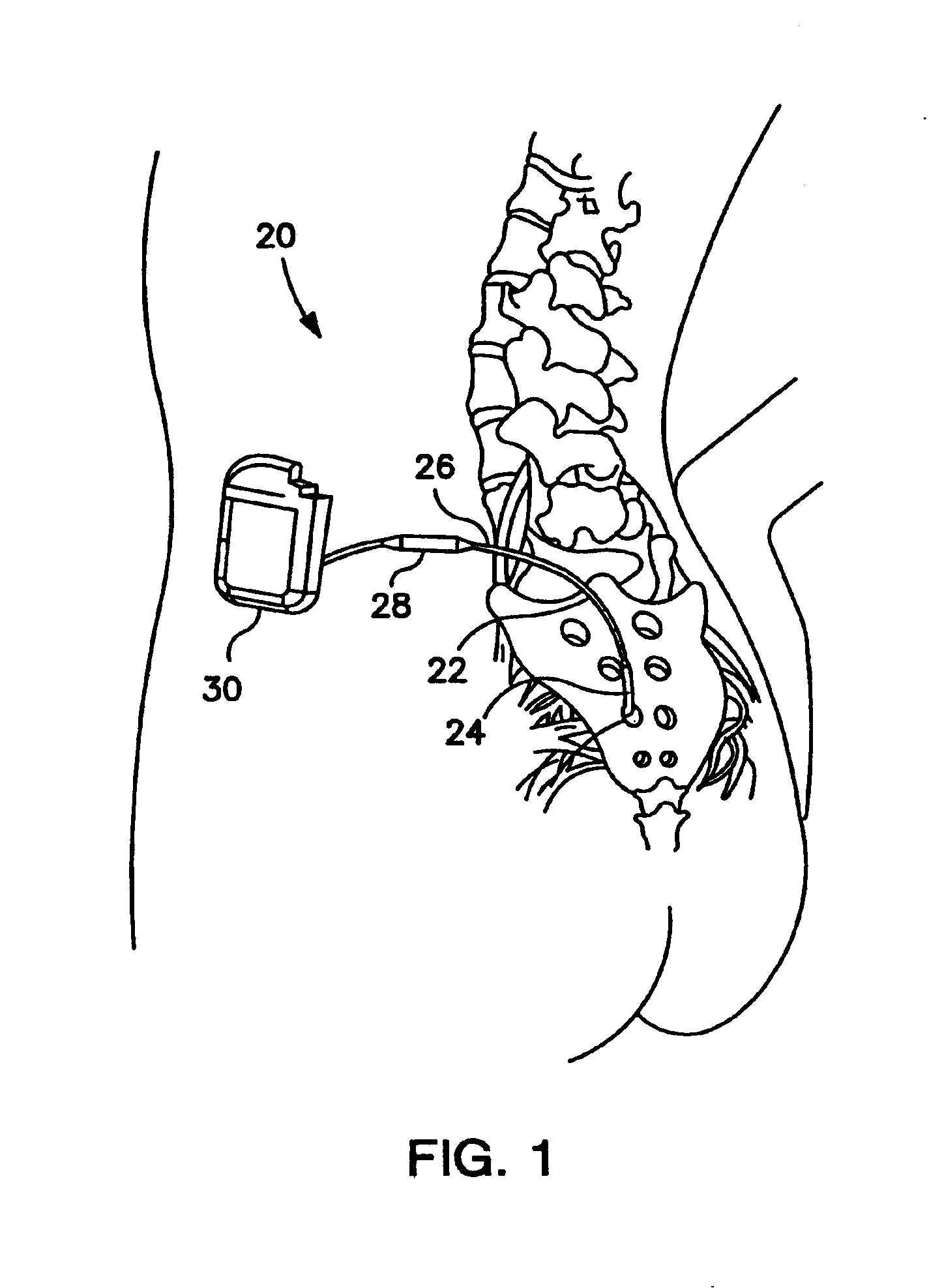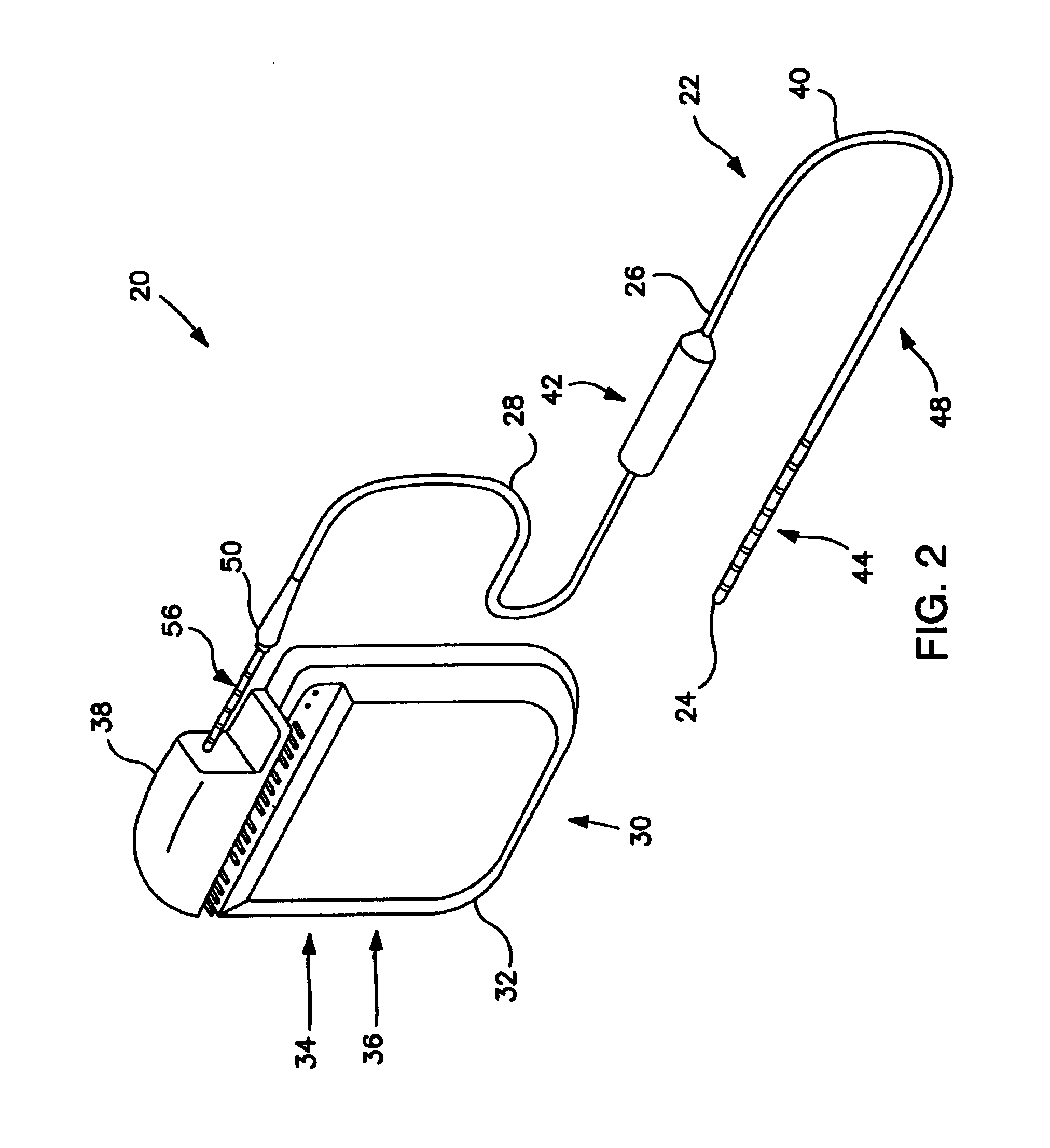Low impedance implantable extension for a neurological electrical stimulator
a technology of implantable extension and electrical stimulation, which is applied in the field of medical devices, can solve the problems of increased power consumption, decreased battery life, and high impedance than is desired, and achieve the effect of low impedance extension and reduced energy consumption
- Summary
- Abstract
- Description
- Claims
- Application Information
AI Technical Summary
Benefits of technology
Problems solved by technology
Method used
Image
Examples
Embodiment Construction
[0021]FIG. 1 shows the environment of an implantable medical device known as an implantable neurological electrical stimulation system 20. The neurological stimulation system 20 can be used for a wide variety of therapies such as pain, movement disorders, pelvic floor disorders, gastroparesis, and many other medical conditions. Implantation of the neurological stimulation system 20 typically begins with either percutaneous or surgical implantation of a stimulation lead 22 typically while the patient is under local anesthetic. Once the stimulation lead 22 has been implanted and positioned, the stimulation lead's distal end 24 is typically anchored into position to minimize movement of the stimulation lead 22 after implantation. The stimulation lead's proximal end 26 is connected to a lead extension 28 that has been tunneled to the location where a neurological electrical stimulator, also known as a neurostimulator 30 is to be implanted. The lead extension 28 is connected to the neuro...
PUM
 Login to View More
Login to View More Abstract
Description
Claims
Application Information
 Login to View More
Login to View More - R&D
- Intellectual Property
- Life Sciences
- Materials
- Tech Scout
- Unparalleled Data Quality
- Higher Quality Content
- 60% Fewer Hallucinations
Browse by: Latest US Patents, China's latest patents, Technical Efficacy Thesaurus, Application Domain, Technology Topic, Popular Technical Reports.
© 2025 PatSnap. All rights reserved.Legal|Privacy policy|Modern Slavery Act Transparency Statement|Sitemap|About US| Contact US: help@patsnap.com



